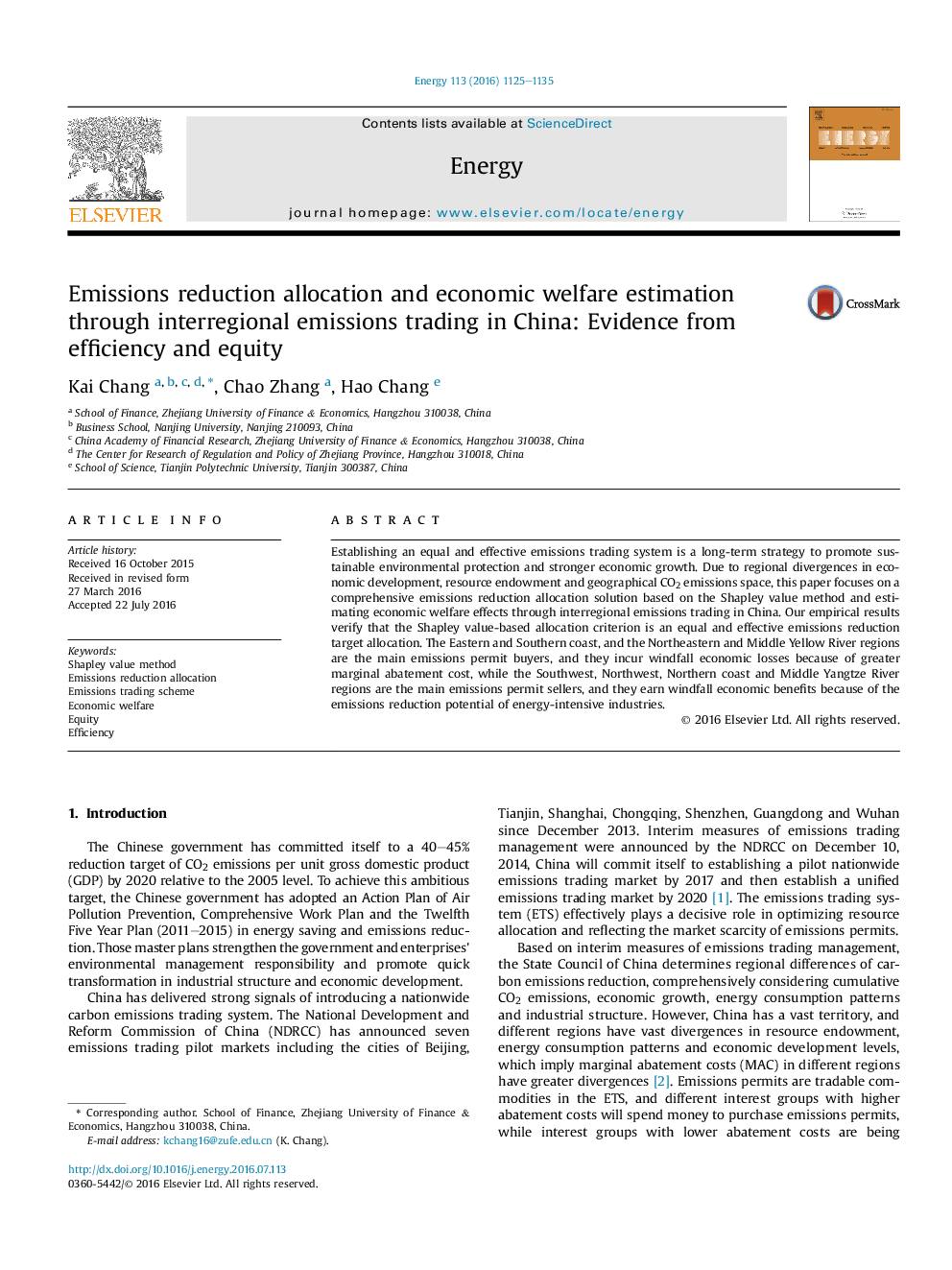| Article ID | Journal | Published Year | Pages | File Type |
|---|---|---|---|---|
| 1730810 | Energy | 2016 | 11 Pages |
•This paper focuses on Shapley value-based emission reduction allocation solution.•Economic welfare effects of interregional emission trading permits are adopted.•Shapley value-based criteria are an equal and effective permits allocation.•Multi-criteria allocation may reduce regional divergences and interactions.
Establishing an equal and effective emissions trading system is a long-term strategy to promote sustainable environmental protection and stronger economic growth. Due to regional divergences in economic development, resource endowment and geographical CO2 emissions space, this paper focuses on a comprehensive emissions reduction allocation solution based on the Shapley value method and estimating economic welfare effects through interregional emissions trading in China. Our empirical results verify that the Shapley value-based allocation criterion is an equal and effective emissions reduction target allocation. The Eastern and Southern coast, and the Northeastern and Middle Yellow River regions are the main emissions permit buyers, and they incur windfall economic losses because of greater marginal abatement cost, while the Southwest, Northwest, Northern coast and Middle Yangtze River regions are the main emissions permit sellers, and they earn windfall economic benefits because of the emissions reduction potential of energy-intensive industries.
